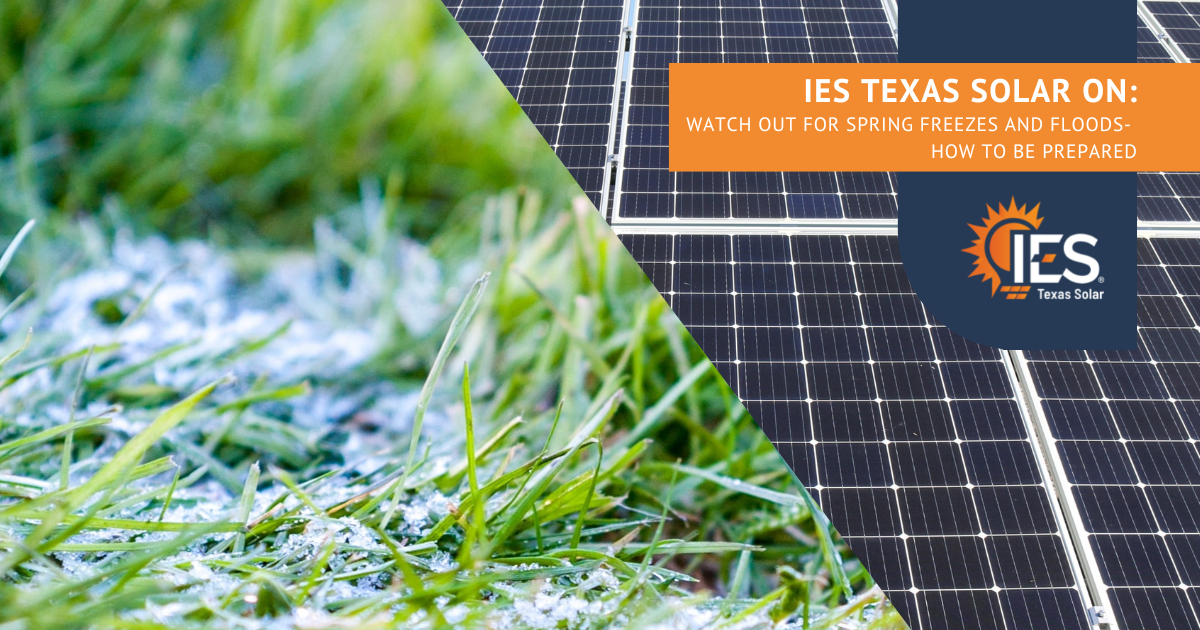
Time to Read: 4 minutes
Date: March 28, 2023
March may feel more like spring, but don’t let it fool you – winter weather still visits the Lone-Star State up into April. It may come as a surprise to some, but there have been freezes in several major cities up to the middle of April. Additionally, flash flooding season is nearly here. So what is this year going to look like? Are there going to be any more cold snaps? If not, then what can you do to prepare for the extreme heat the summer is sure to bring us? What are sources like the Farmers Almanac saying? And what about flooding conditions? On top of it all, flood season is just around the corner.
In this article, we’re going to explore spring freezes and floods, when they seem likely to occur, and what you can do to prepare.
Texas Spring Freezes in Late March and Early to Mid-April
For context, when we say that freezes have happened in April, just how far into the month were they? In Dallas, the latest recorded freeze date is April 13, 1997 while San Antonio’s reaches back to April 3, 1987. This isn’t to say that it hasn’t been chilly during April, but there have definitely been some cold spells.
It’s important to remember that we have been seeing extreme temperatures and weather conditions at points in time that we haven’t before. When Winter Storm Uri caught Texas by surprise it was just the beginning of weather changes for the state. Since then the grid has improved, but the Texas power grid still remains vulnerable to low and high temperatures. On top of that, local power outages that are outside of the grid’s control still happen.
Flood Season
The months of April to September tend to be flash flood season for Texas. One large reason for this is because these months, especially early spring, is when Texas gets a good deal of its rainfall. Many areas in Texas are also very prone to flooding. This is due to things like…
- Soil conditions: A good deal of land in Texas is high in clay, meaning that it doesn’t absorb water very well. This causes water to sit on top of the soil.
- Flood plains: Some areas are very flat and/or are located close to rivers like the Rio Grande.
- Swampy environments and city layout: This one is especially true for Houston. Cities and towns built on swamp land have a very difficult time with flooding. This is due to the fact that they already have so much moisture in the ground. The land in Houston also has a high amount of clay soil in addition to flat terrain. This makes it especially prone to flooding.
- Landforms and steep terrain: Steep areas like places in the hill country tend to experience flooding due to the water running down the hilly areas and collecting in lower areas.
While beautiful, Texas is called “flash flood alley” for a reason. Flash floods can lead to power outages and boil water notices in the spring. Even if your area isn’t directly hit with a flash flood, the company supplying your electricity may be. Your local water treatment facility may also be affected. The Farmers Almanac predicts that Texas will get a lot of thunderstorms this spring. Luckily, there is something that you can do to safeguard yourself from losing electricity in these conditions (as long as your home itself isn’t flooded that is).
Home Standby Generators and Backup Batteries are the Best Defense Against Power Outages
Generac home standby generators are the perfect backup power solution for Texas cold snaps and flash floods. In recent years, more and more Texans have been installing backup power solutions and solar power systems in order to adapt to the harsh weather some seasons bring. Many Texans who have been through power outages caused by hurricanes and winter storms have installed home standby generators to keep from going through such a hardship again. Checkout what some of our customers are saying about them here!
It’s important to note that not all Texans are in a position to add all the components of a sustainable backup power solution in one shot. Generators, however, are a very cost effective way to add backup power to your solar power system. One of our customers added all three to create what is referred to as a “bullet-proof system”! Check out what he had to say about it!
Backup batteries also play a big part in avoiding power loss during an outage. You are able to store electricity in a backup battery and then use it whenever there is a power outage. Take a look at what some of our customers are saying about their experiences with our backup batteries!
Spring freezes and flash flood season are no exception! When you work with a professional from IES Texas Solar, you can get the best generator for your backup power needs! IES Texas Solar can size your system so that you can use it to keep your home running for as long as you need it to! You can also switch your home’s power to and from the generator while keeping an eye on its status (maintenance alerts, power generation) from your Generac mobile link. Call a solar consultant and ask about a generac home standby generator today!
We have made it our mission to be a source of truth in renewable energy. Our team believes that accurate solar and backup power education is the foundation for making the best decision when choosing a system that fits your needs.
If you are considering installing a backup generator or switching to solar for your home or business, reach out to us by going to our website, iestxsolar.com, or by giving us a call at (855) 447-6527.
: